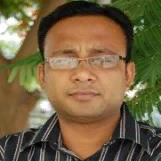[1]D. Kundur and D. Hatzinakos, "Digital watermarking for telltale tamper proofing and authentication," proceedings of the IEEE 87(7), 1167–1180 (1999).
[2]R. Venkatesan, S.-M. Koon, M. H. Jakubowski, and P. Moulin, "Robust Image Hashing," IEEE International Conference on Image Processing, ICIP 2000, Vol. 3, Sept. 2000, pp. 664–666.
[3]C. S. Lu and H. Y. M. Liao, "Structural digital signature for image authentication: An incidental distortion resistant scheme," proceedings of Multimedia Security Workshop, 8th ACM International Conference Multimedia, pp. 115-118, 2000.
[4]C. Rey and J. Dugelay, "A survey of watermarking algorithms for image authentication," EURASIP Journal on Applied Signal Processing 2002(6), 613–621 (2002).
[5]P. L. Lin, C. K. Hsieh, and P. W. Huang, "A Hierarchical Digital Watermarking Method for Image Tamper Detection and Recovery," Pattern Recognition, Vol. 38, Issue 12, 2005, pp. 2519-2529.
[6]S. Gholap and P. K. Bora, "Illuminant color based image forensics," TENCON proceedings of IEEE Region 10 Conference, 2008, pp. 1–5.
[7]X. Wu and Z. Fang, "Image splicing detection using illuminant color inconsistency," proceedings of IEEE International third Conference of Multimedia Information Networking and Security (MINES), Nov. 2011, pp. 600–603.
[8]T.J. de Carvalho, C. Riess, E. Angelopoulou, H. Pedrini and A. de Rezende Rocha, "Exposing Digital Image Forgeries by Illumination Color Classification," IEEE Trans. Information Forensics and Security, vol. 8, no. 7, pp.1182 -1194, 2013.
[9]J. Lukas, J. Fridrich, and M. Goljan, "Detecting digital image forgeries using sensor pattern noise," proceedings of the SPIE Electronic imaging, security, stegnography, and watermarking of multimedia contents VIII, vol. 6072, 2006.
[10]G. Chierchia, G. Poggi, C. Sansone and L. Verdoliva, "A Bayesian-MRF approach for PRNU-based image forgery detection," IEEE Trans. Information Forensics and Security, on 9(4), 554-567, 2014.
[11]Popescu, Alin C., and Hany Farid. "Exposing digital forgeries in color filter array interpolated images." IEEE Transactions on Signal Processing, 53, no. 10, 3948-3959, 2010.
[12]Mahdian, Babak, and Stanislav Saic. "Blind methods for detecting image fakery," IEEE Aerospace and Electronic Systems Magazine 25.4, 18-24, 2010.
[13]H. Farid, "Exposing digital forgeries from JPEG ghosts," IEEE Transaction on Information Forensics and Security, vol. 4, no. 1, pp. 154–160, Mar. 2009.
[14]X. Feng and G. Doërr, "JPEG recompression detection," Proceedings of the SPIE-Media Forensics and Security II, vol. 7541 of , 75410J, Jan. 2010.
[15]Y.-L. Chen and C.-T. Hsu, "Detecting recompression of JPEG images via periodicity analysis of compression artifacts for tampering detection," IEEE Transaction on Information Forensics and Security, vol. 6, no. 2, pp. 396-406, Jun. 2011.
[16]Ng, Tian-Tsong, and Shih-Fu Chang. "A model for image splicing," Image Processing, 2004, ICIP '04, International Conference on. Vol. 2. IEEE, 2004.
[17]S. Bayram, I. Avcibas, I. Sankur and I. Memon "Image manipulation detection with binary similarity measures", proceedings of European Signal Processing Conference, 2005.
[18]J. Dong, W. Wang, T. Tan and Y. Q. Shi, "Run-length and edge statistics based approach for image splicing detection." Digital Watermarking. Springer Berlin Heidelberg, 76-87, 2009.
[19]Ng, Tian-Tsong, Jessie Hsu, and Shih-Fu Chang, "Columbia image splicing detection evaluation dataset," 2009.
[20]Z. He, W. Lu, W. Sun and J. Huang "Digital image splicing detection based on Markov features in DCT and DWT domain," Pattern Recognition 45.12, 4292-4299, 2012.
[21]CASIA Tampered Image Detection Evaluation Database, 2010. [Online]. Available: http://forensics.idealtest.org.
[22]G. Muhammad, M. Al-Hammadi, M. Hussain, G. Bebis, "Image forgery detection using steerable pyramid transform and local binary pattern," Machine Vision and Applications, pp. 1-11, 2013.
[23]J. B. Jordan and L. C. Ludeman. "Image segmentation using maximum entropy techniques," Acoustics, Speech, and Signal Processing, IEEE International Conference on ICASSP'84.. Vol. 9. IEEE, 1984.
[24]G. Satyanarayana Murty, J. Sasi Kiran, and V. Vijaya Kumar, "Facial Expression Recognition Based on Features Derived From the Distinct LBP and GLCM," International Journal of Image, Graphics and |Signal Processing (IJIGSP) 6.2 (2014): 68.
[25]T. Ahonen, E. Rahtu, V. Ojansivu, J. Heikkila¨, "Recognition of Blurred Faces Using Local Phase Quantization," proceedings of nineteenth International conference of Pattern Recognition (ICPR), 2008.
[26]W. Wang, J. Dong, T. Tan, "Effective image splicing detection based on image chroma," proceeding of IEEE International conference on Image Processing (ICIP), Nov. 2009.
[27]B. Liu, C. M. Pun and X. C. Yuan, "Digital Image Forgery Detection Using JPEG Features and Local Noise Discrepancies." the Scientific World Journal, 2014.
[28]Y.F. Hsu, S.F. Chang, "Detecting image splicing using geometry invariants and camera characteristics consistency," proceedings of IEEE International Conference on Multimedia and Expo (ICME), pp. 549–552, 2006.
[29]C. Hsu, C. C. Chang, and C. J. Lin, "A practical guide to support vector classification," Technical report, 2005.
[30]Pohjalainen, Jouni, Okko Räsänen, and Serdar Kadioglu.,"Feature selection methods and their combinations in high-dimensional classification of speaker likability, intelligibility and personality traits," Computer Speech & Language 29.1, 145-171, 2015.
[31]M. Hussain, G. Muhammad, S. Q. Saleh, A. M. Mirza, G. Bebis, "Image forgery detection using multi-resolution Weber local descriptors," Eurocon2013, pp. 1570- 1577, Zagreb, Croatia, July 2013.

